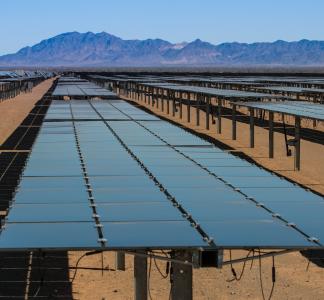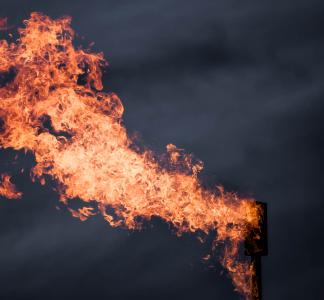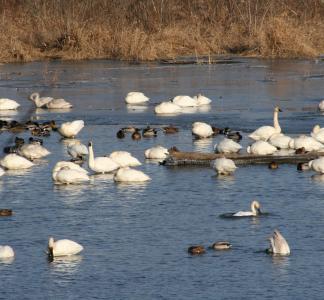Why we need a climate plan for our public lands
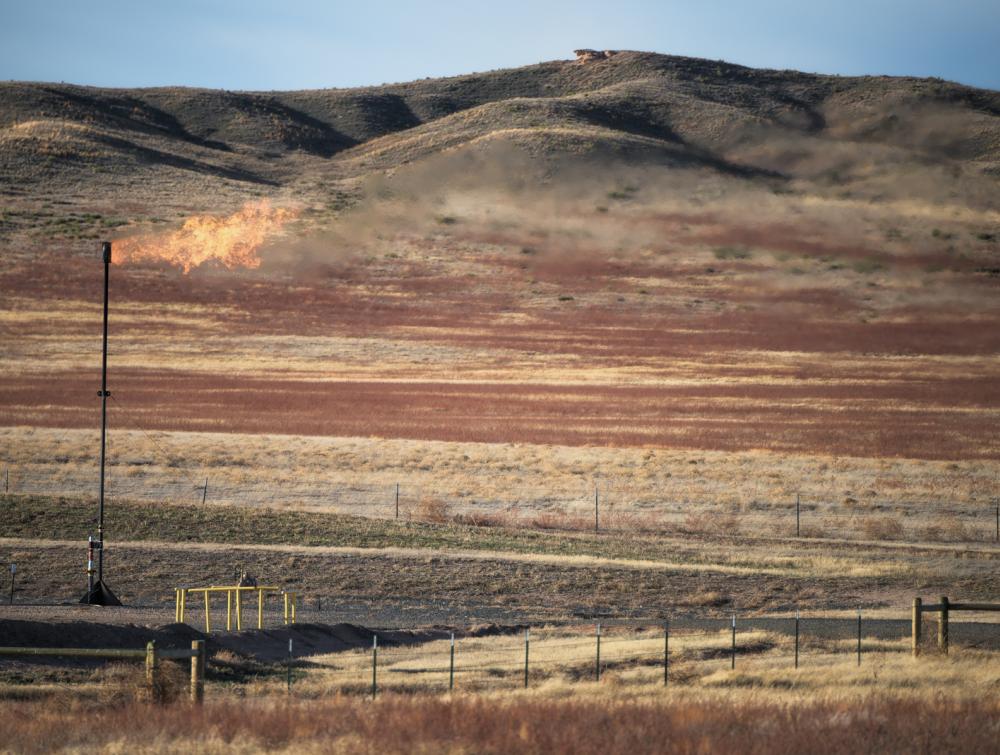
Methane flare in Pawnee National Grassland, CO
Mason Cummings, The Wilderness Society
Testimony before the House Natural Resources Subcommittee on Energy and Minerals
For more than 80 years, The Wilderness Society has worked to protect America’s wild, public lands. These lands include our national parks, wilderness areas, and forests – places of spectacular beauty that define who we are as a country. They are critical to the clean air we breathe and the clean water we drink.
They provide recreation opportunities and an irreplaceable cultural and spiritual connection for past, present and future generations.
Now, many people think just because public lands are public, they are protected – but that is simply not the case.
The majority of our public lands are not in a National Park, Wilderness or other protected designation but are lands managed for multiple uses including oil and gas development and mining.
According to our analysis, lifecycle emissions from oil, gas and coal pulled from public lands and waters were equivalent to more than 20 percent of total U.S. greenhouse gas emissions in 2018.
The U.S. Department of the Interior manages over 2.4 billion acres of subsurface mineral rights including energy resources like coal, crude oil and natural gas both onshore and offshore. The Bureau of Land Management (BLM) is responsible for coal leasing on about 570 million acres, and oil and gas leasing on approximately 700 million acres of onshore BLM, national forest and other federal lands, as well as private lands where the federal government has retained mineral rights. The Bureau of Ocean Energy Management oversees approximately 1.7 billion offshore acres on the U.S. Outer Continental Shelf.
At the end of 2016, private companies held over 40,000 onshore oil and gas leases covering more than 26 million acres and had leased an additional 36 million acres offshore.
Fossil energy developers enjoy a sweetheart deal on public lands. Our research shows that 90 percent of BLM-managed subsurface mineral acres are open to oil and gas leasing. And these lands are available for leasing at bargain basement prices: as little as $2.00 per acre. That means that, for less than the price of a cup of coffee, developers can purchase and lock up outdoor recreation areas and wildlife habitat for years – and often decades – regardless of whether they actually drill or mine on those lands.
These lands and leaseholds produce a significant share of our nation’s energy. In 2017, federal lands and waters contributed 42 percent of total U.S. coal production, 24 percent of total U.S. oil production and 13 percent of total U.S. gas production.
That means that public lands are a major source of the nation’s climate emissions problem. According to our analysis, using methods replicated by the U.S. Geological Survey, lifecycle emissions from oil, gas and coal pulled from public lands and waters were equivalent to more than 20 percent of total U.S. greenhouse gas emissions in 2018. To put that in context: public lands would rank as the 5th largest source of emissions in the world as their own nation, ahead of Japan, Brazil and Germany.
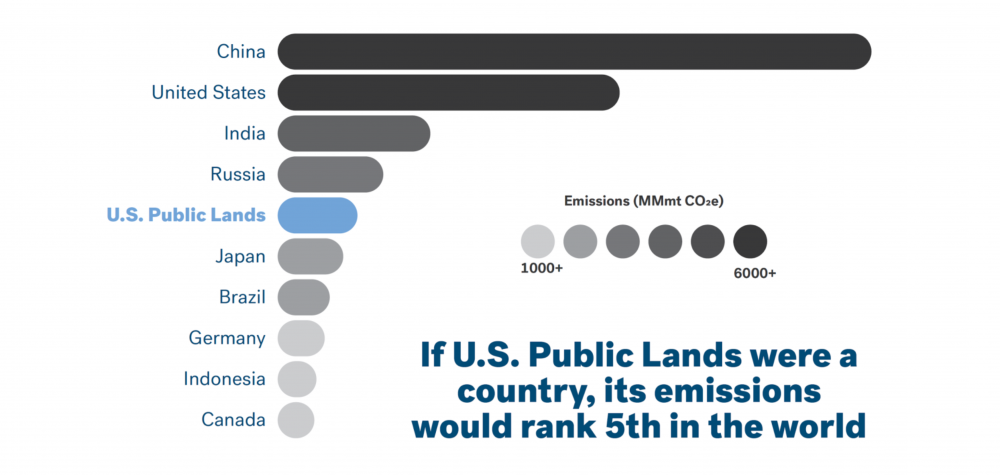
The Wilderness Society
Meanwhile, our public lands and the communities who rely on them are at the forefront of climate change impacts – from melting glaciers and tundra to catastrophic flooding and wildfires.
Under this administration’s ‘energy dominance’ agenda, things are only getting worse.
As part of the largest reversal of conservation protections in history, critical safeguards for the environment and public safety were stripped away to eliminate so-called impediments to leasing. Over 2017 and 2018, President Trump’s Interior Department rolled back protections on 153 million acres of land and water that were conserved for cultural, ecological, and recreational reasons. To put that into perspective, the area is about the size of California and Washington combined. This includes iconic places like Bears Ears and Grand Staircase-Escalante National Monuments in Utah, as well as 22 million acres of conservation for sage grouse habitat developed collaboratively with bipartisan support from western governors.
This Administration has taken every opportunity to make it cheaper and easier for oil and gas producers while cutting the public out of decisions at every turn. For example, less than one month after being confirmed, Secretary Zinke signed Secretarial Order (S.O.) 3349, which was designed to implement a presidential directive to “review all existing regulations, orders, guidance documents, policies, and any other similar agency actions...that potentially burden the development or use of domestically produced energy resources.” The order rescinded or ordered the rescission of a number of important climate and mitigation policies, lifted the moratorium on new coal leases, and ordered the review of four commonsense regulations affecting oil and gas operations on National Park Service lands, fish and wildlife refuges, and other public lands. On May 2, 2017, the Department issued S.O. 3351, which was focused on eliminating “harmful regulations and unnecessary policies.” The order created a position with the express duty to identify regulatory burdens that unnecessarily encumber energy exploration development, production, transportation; and develop strategies to eliminate or minimize these burdens.
This administration has willfully disregarded science and deliberately hidden the climate impact of energy leasing while offering more land for lease than any administration in history. At the very time we must be pumping the brakes on carbon emissions, this administration is accelerating the climate crisis.
Today, the management of these lands is a large part of the climate problem instead of being a central part of our national solution. We should be leading the changes we need to see on these lands we all own.
How our public lands can provide climate solutions
- Our public lands can allow plants and wildlife to migrate to suitable habitat in a warming world.
- They can put people to work conserving and restoring damaged lands, to make them more resilient to climate change and boost carbon storage. Public lands have the potential to remove carbon dioxide (CO2) from the atmosphere. Between 2005-2014, federal agency estimates found that federal lands sequestered an average of 343 million metric tons of carbon dioxide equivalent (MMT CO2e) per year.
- They can provide sustainable economic opportunities to those communities most affected by boom-and-bust energy cycles. Fossil energy development and other extractive industries no longer drive prosperity. Research from Headwaters Economics has shown that a wide range of factors including mechanization, economic diversification, global competition, and rapid growth in more competitive economic sectors has undermined the relative contribution of resource extraction especially in the rural west, where the impact is small and has been declining for decades. In fact, rural counties in the West with more federal lands or protected federal lands are performing better on average than their peers.
- They can help dramatically increase clean energy production and availability. Though public lands have huge renewable energy potential, currently less than 5% of the total U.S. solar, wind and geothermal capacity comes from projects on public lands. This illustrates the great potential for growth and the need to invest in a smart approach that achieves our clean energy and climate goals while protecting our natural and cultural heritage. Along with deep commitments to energy efficiency, energy conservation, distributed generation like rooftop solar, and modernizing our electrical transmission grid, responsible renewable energy development on public lands can and should play a key role in addressing the climate challenge.
- And they can and must lead our national efforts to achieve the emissions reductions demanded by climate science. We must stop propping up ailing oil, gas and coal producers by eliminating subsidies and regulatory loopholes, stop permitting needless methane waste and other pollution, and stop recklessly issuing leases and permits without consideration of their climate damage.
In short, we need a climate plan for our public lands. Thank you for the opportunity to testify today and I look forward to working with you all on the many solutions we must bring to this crisis.
Tools & Resources
Green New Deal debate underscores climate urgency; public lands part of solution
Tom Brewster
A blind spot in the plan to reduce emissions is slowing progress in the fight against climate change
Mason Cummings, The Wilderness Society
5 ways LWCF can help confront the impacts of climate change
Cindy Samples, USFWS
